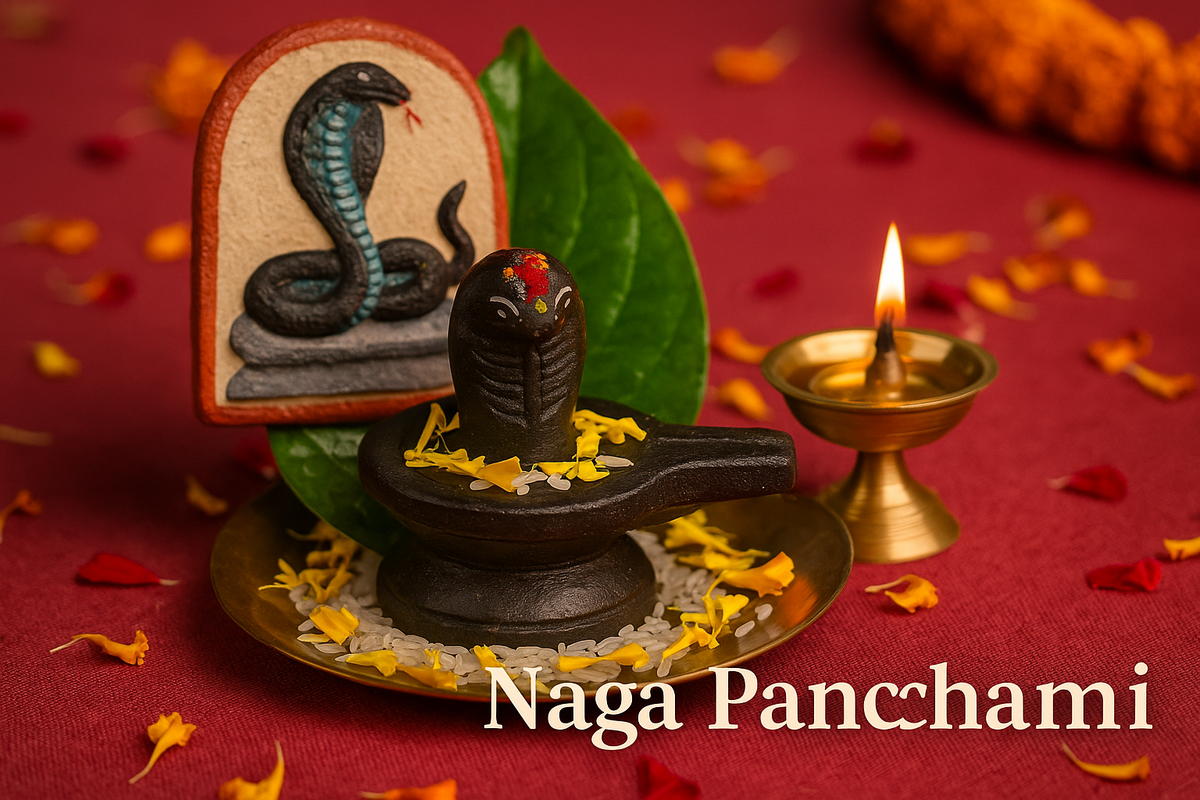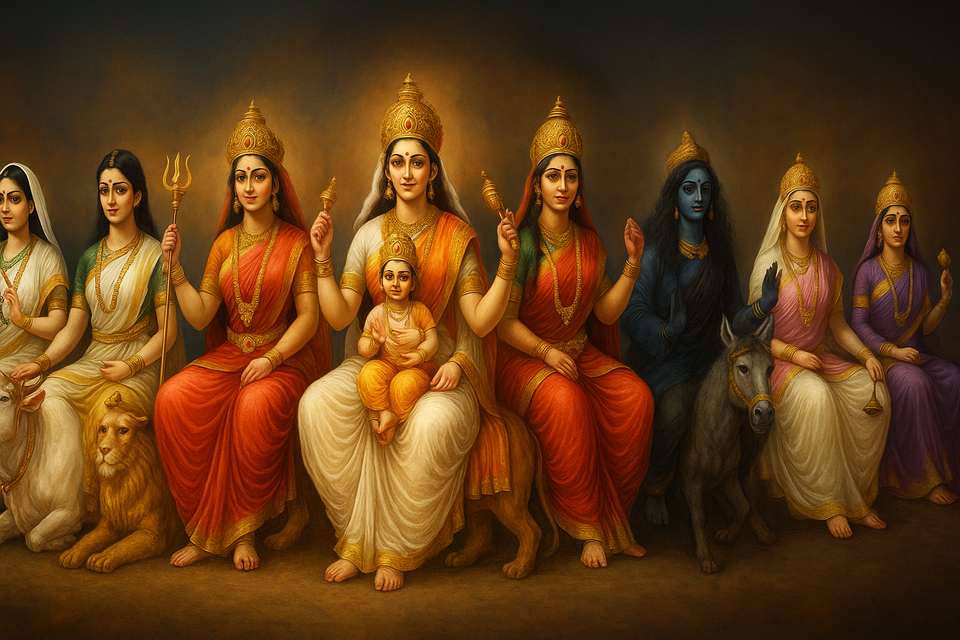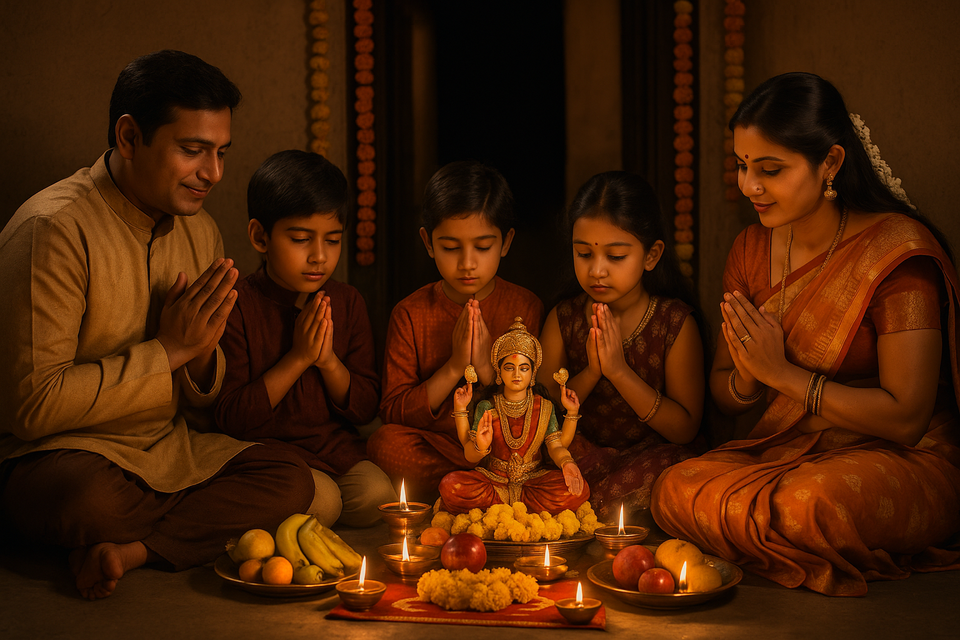🐍 Naga Panchami: Celebrating the Sacred Bond with Serpent Deities
The rich traditions and spiritual significance of Naga Panchami, a Hindu festival venerating serpents. Learn about the rituals, cultural

Naga Panchami, a vibrant and deeply spiritual festival, is celebrated with immense devotion across India and parts of Nepal. Observed on the fifth day (Panchami) of the bright half of the lunar month of Shravan (July/August), this festival honors the sacred serpents or Nagas. Snakes have been worshiped in Indian tradition for millennia, representing rebirth, death, protection, and fertility. 🙏
The relevance of snakes in Hindu mythology is profound. Lord Shiva wears a serpent around his neck, and Lord Vishnu rests upon the thousand-headed serpent, Shesha. Naga Panchami is a day to offer prayers to these divine serpents, seeking their blessings for prosperity, fertility, and protection from evil. Festivals like Naga Panchami are beautifully rooted in our Ancient Festivals of India, celebrating nature and its wonders.
From vibrant temple rituals to colorful folk dances, the essence of Naga Panchami lies in gratitude towards nature. It’s a mesmerizing experience for both devotees and cultural enthusiasts alike. Let’s dive deep into this captivating celebration and understand why Naga Panchami remains a beloved Indian festival even today! 🌺
Mythological Stories Behind Naga Panchami 📖🐍
The tales surrounding Naga Panchami are as mystical as the festival itself. One popular legend speaks about a farmer’s son who accidentally killed some young serpents while plowing the field. In revenge, the mother serpent killed the farmer’s entire family except for his daughter, who had prayed for mercy. In repentance, people began worshipping snakes to appease them, giving birth to the tradition of Naga Panchami. 🧿
Another renowned legend is from the Mahabharata. During the famous Sarpa Satra (snake sacrifice) organized by King Janamejaya to avenge his father's death by a serpent bite, the sacrifice was stopped by Astika, a learned sage. His intervention saved the serpent race, and hence the day was celebrated as Naga Panchami. Such myths are beautifully intertwined with ancient beliefs, making the festival deeply spiritual.
Furthermore, Hindu scriptures like the Puranas and Upanishads also mention serpent worship, highlighting the sanctity of the Nagas. This reverence is not just mythological but also philosophical, symbolizing the unseen forces of nature that govern life and death. 🌿
Connecting to the sacred tales during Naga Panchami serves as a reminder of our rich cultural past, much like how Raksha Bandhan reminds us of sibling love and duty. 🎉
How is Naga Panchami Celebrated Across India? 🎉🙏
The celebrations of Naga Panchami vary widely across different regions of India, each adding its unique colors and customs. In Maharashtra, women draw intricate images of serpents on the walls of their houses and offer milk, sweets, and flowers. Temples dedicated to Nagas are beautifully decorated, and rituals are performed with devotion. 🌸
In South India, especially in Karnataka and Kerala, huge snake idols are worshipped. Special prayers are offered at ancient snake temples like the Mannarasala Temple in Kerala. Devotees pour milk on anthills, which are considered sacred abodes of snakes. People also observe fasting, seeking the Nagas’ blessings for a happy and prosperous life. 🍃
In Uttar Pradesh and Rajasthan, clay idols of serpents are worshipped at home. Local fairs and snake-charming performances add to the festive fervor. Meanwhile, farmers particularly worship snakes, believing it will bring good harvests and protect their crops. 🌾
Nepal also celebrates Naga Panchami with grandeur. Serpent images are posted on doors and windows to protect the household from evil spirits. Traditional food like “kwati” (a sprout soup) is prepared, offering it first to the Nagas before consumption. The celebration thus becomes a beautiful blend of faith, gratitude, and culture. 🌺
Spiritual Significance and Symbolism of Naga Panchami 🌿🌟
Naga Panchami is more than just a festival; it’s a deep spiritual practice of acknowledging forces beyond human comprehension. Snakes are seen as protectors of wealth and guardians of the underworld in Hindu mythology. Worshiping them ensures safety, fertility, prosperity, and protection against diseases and misfortunes. 🧘♀️
The serpentine form itself symbolizes Kundalini energy in Yogic traditions. Kundalini, the coiled energy lying dormant at the base of the spine, is often depicted as a snake. Awakening this energy leads to spiritual enlightenment. Thus, worshipping snakes is also symbolically honoring the powerful spiritual force within. ✨
Moreover, snakes control the rodent population in agricultural fields, making them ecologically crucial. By honoring snakes, ancient Indians acknowledged their vital role in maintaining nature’s balance — an ecological wisdom worth learning even today! 🌎
The festival also emphasizes respect for all forms of life, a core value found across most Ancient Festivals of India. Naga Panchami reminds us of the sacred interconnectedness between humans, nature, and the divine.
Rituals and Customs Followed on Naga Panchami 🔥🛕
Rituals form the heart of Naga Panchami celebrations. People wake up early, take purifying baths, and visit temples devoted to snake deities. Traditional offerings like milk, sweets, turmeric, and flowers are made to snake idols and images. Pouring milk over snake pits or anthills is a common practice. 🥛
Women especially play a significant role during the festivities. They create vibrant Rangoli designs representing Nagas and perform Puja (worship) with utmost devotion. Tying a sacred thread (Raksha Sutra) on their wrist after prayers ensures protection from harm throughout the year. 🧵
Fasting is another significant observance. Many devotees fast throughout the day, consuming only milk or light fruits. Some villages also conduct processions carrying live snakes in glass containers, accompanied by singing and dancing. While modern sensibilities emphasize animal welfare, traditional celebrations carried profound symbolism. 🎶
Households also avoid digging the earth or plowing fields during Naga Panchami, respecting the Nagas' dwelling places. Such practices, born of ecological sensitivity, underline the festival’s deep-rooted wisdom and compassion for all living beings. 🐾
Foods Associated with Naga Panchami Celebrations 🍛🍃
Traditional foods consumed during Naga Panchami are simple, pure, and sattvic (pure, vegetarian). Special sweets made of jaggery, coconut, and milk are prepared. In Maharashtra, dishes like Puran Poli, Kheer, and rice varieties are common festive treats. 🥥
In South India, delicacies like Payasam (rice pudding) and various coconut-based sweets are offered first to the Nagas and then shared among family and friends. Eating light foods and avoiding spicy or heavy meals is part of maintaining purity during the festival. 🍚
In many regions, preparing and consuming sprouted grains is an essential tradition. It symbolizes life, growth, and prosperity — values closely tied to the Nagas' worship. The simple yet spiritually significant foods reflect gratitude towards nature's bounty. 🥗
Offering food to the poor and to Brahmins is also an age-old practice during Naga Panchami, highlighting the Indian ethos of charity and kindness, much like other sacred celebrations such as Raksha Bandhan.
Scientific and Ecological Importance of Naga Panchami 🌎🐍
Beyond its religious significance, Naga Panchami carries profound ecological wisdom. Snakes play a pivotal role in the food chain by controlling pests and maintaining agricultural balance. Ancient Indians, understanding this balance, created festivals that reinforced respect and protection for snakes. 🌿
Modern science acknowledges the importance of preserving snake populations for ecological health. Habitat destruction and superstitions have endangered many snake species. By celebrating Naga Panchami responsibly — avoiding harm to snakes and promoting awareness — we uphold nature conservation principles. 🌳
Many organizations today use the festival as a platform to educate people about snakes' role in ecosystems and to discourage cruelty. This merging of tradition and modern environmentalism makes Naga Panchami even more relevant today. 🌎
As with many Ancient Festivals of India, Naga Panchami's roots lie in harmonizing human life with nature — a timeless wisdom the world sorely needs.
Conclusion: Naga Panchami — A Festival of Gratitude, Faith, and Ecological Wisdom 🐍🙏
Naga Panchami beautifully blends mythology, spirituality, ecological awareness, and gratitude. It teaches us respect for all creatures, reverence for unseen energies, and gratitude for nature’s gifts. From ancient rituals to vibrant celebrations, every aspect of this festival connects us to a greater universal harmony. 🌟
As we celebrate Naga Panchami, let us remember that honoring the Nagas is also about honoring the Earth, our traditions, and the divine energy that flows through all life. 🌺
May this Naga Panchami bring you and your loved ones protection, prosperity, and spiritual awakening! 🐍✨





